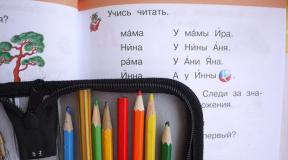Yaroslav the Wise as a diplomat examples and facts. Interesting facts about Yaroslav the Wise. Close ties with the Scandinavian countries
Smooth 960 yearspassed since the day of death Grand Duke Yaroslav the Wise- father, grandfather and uncle of many rulers of Europe. He went down in history as one of the most powerful rulers of Kievan Rus, the compiler of the first known code of laws in Russia. What has he done for the country, and what can we learn from him?
In 1054, on the day of the Triumph of Orthodoxy (one of the Orthodox holidays celebrated in the first week of Great Lent), Grand Duke Yaroslav Vladimirovich the Wise died. The exact date of birth is not known, various chronicles indicate either 978, or 988, or 998. Such discrepancies may be caused both by difficulties in reading the medieval Russian counting system, and by the desire of the chroniclers to show Yaroslav older than the rest of the brothers. Yaroslav was buried in St. Sophia Cathedral in Kiev. The marble six-ton \u200b\u200bsarcophagus of Yaroslav still stands in the Cathedral of St. Sofia. It was discovered in 1936, 1939 and 1964, and not always qualified research was carried out. According to the results of the autopsy in January 1939, anthropologist Mikhail Gerasimov in 1940 created a sculptural portrait of the prince, which formed the basis for all subsequent images of the prince.

1. Yaroslav the Wise is canonized by the Orthodox Church. Officially, Yaroslav was canonized by the Russian Orthodox Church only in 2004, although he was first mentioned as a saint in the work of Adam of Bremen, The Acts of the High Priests of the Hamburg Church. The father of Yaroslav the Wise - Prince Vladimir Svyatoslavovich (yes, yes, the same "Red Sun"), brothers of Yaroslav the Wise - Saints Boris and Gleb, the son of Yaroslav the Wise - Vladimir Yaroslavovich, grandsons of Yaroslav - Vladimir Monomakh and Hugo the Great, brother-in-law of Yaroslav were canonized as well - Olaf the Saint.

2. Special attention Yaroslav strengthened diplomacy and foreign policy. Dynastic marriages were one of the ways to strengthen diplomatic relations. Yaroslav the Wise had 10 children: 3 daughters and 7 sons. Elizabeth became the wife of the Norwegian king, Anastasia became the wife of the King of Hungary, Anna married the French king. Yaroslav's sons also married daughters from Austrian, Greek, Polish, German royal families. Yaroslav himself was married twice, the second wife and mother of most of the children was the daughter of the Swedish king Olaf - Ingigerd (in Orthodoxy Irina).

3. Yaroslav the Wise was known as the founder of cities. He founded Yuryev (now Tartu in Estonia), Yuryev Russky (now Bila Tserkva in Ukraine), Novgorod-Seversky (now in the Chernigov region), Yaroslavl in the Carpathian region (now Yaroslav), and, of course, Yaroslavl, built on the Volga river ...

4. Yaroslav was the hero of many literary works of that time, for example "The Legend of Boris and Gleb", "The Word of Law and Grace", he is also mentioned in many Scandinavian sagas under the name "Yarisleiva Konung Holmgard".

5. The Novgorod State and Kharkov Law Universities, as well as the state award of Ukraine - the Order of Prince Yaroslav the Wise, are named after Yaroslav the Wise.

6. Under Yaroslav, the first Russian monasteries appeared, under him Kiev became one of the largest cities in Europe, and was inferior only to Constantinople.

7. Under Yaroslav, active work was launched to translate foreign books into Church Slavonic and Old Russian languages. Years are wasted writing books. A unique library of Yaroslav the Wise is being created, which disappeared without a trace, like the later library of Ivan the Terrible.

8. Yaroslav the Wise was actually one of the first unifiers of the Russian lands. He gathered under his rule almost all Russian lands from the south to the north.

9. Yaroslav was the first to deal with the separation of secular and religious norms, thus separating the church from the state, making it more independent on the one hand, and defining and structuring its powers and responsibilities, on the other. In this regard, the "Church charter" of Yaroslav the Wise was issued, which clearly delineated the powers of secular and religious authorities, various offenses against the Orthodox faith, and measures of responsibility for them.

10. Perhaps the main achievement of Yaroslav the Wise is the codification of Russian legislation. Created by Yaroslav the Wise "Russian Truth" is the oldest extant collection of normative legal acts of Ancient Rus. "Russkaya Pravda" contains the norms of criminal, hereditary, commercial and procedural legislation, and is one of the most important sources on the history of legal, economic and social relations in Russia.

Yaroslav the Wise has done a great job of creating and strengthening the positions of the Russian state, both in the external and internal spheres. He gave people the laws by which they lived, under him Russia was one of the most powerful and prosperous European states. He was one of those who laid the foundation for a state that has existed for almost a thousand years. He already understood then that the basis for the existence of any state is unity and legality.
In 1054, on the day of the Triumph of Orthodoxy (one of the Orthodox holidays celebrated in the first week of Great Lent), Grand Duke Yaroslav Vladimirovich the Wise died. The exact date of birth is not known, various chronicles indicate either 978, or 988, or 998. Such discrepancies can be caused both by difficulties in reading the medieval Russian counting system, and by the desire of the chroniclers to show Yaroslav older than the rest of the brothers. Yaroslav was buried in St. Sophia Cathedral in Kiev. The marble six-ton \u200b\u200bsarcophagus of Yaroslav still stands in the Cathedral of St. Sofia. It was discovered in 1936, 1939 and 1964, and not always qualified research was carried out. According to the autopsy results in January 1939, anthropologist Mikhail Gerasimov in 1940 created a sculptural portrait of the prince, which formed the basis for all subsequent images of the prince
In connection with the anniversary date, "Ridus" publishes 10 facts about Yaroslav the Wise:
1. Yaroslav the Wise is canonized by the Orthodox Church. Officially, Yaroslav was canonized by the Russian Orthodox Church only in 2004, although he was first mentioned as a saint in the work of Adam of Bremen, The Acts of the High Priests of the Hamburg Church. The father of Yaroslav the Wise was also canonized - Prince Vladimir Svyatoslavovich (yes, yes, the same "Red Sun"), the brothers of Yaroslav the Wise - Saints Boris and Gleb, the son of Yaroslav the Wise - Vladimir Yaroslavovich, Yaroslav's grandsons - Vladimir Monomakh and Hugo the Great, brother-in-law of Yaroslav - Olaf the Saint.
2. Special attention Yaroslav strengthened diplomacy and foreign policy. Dynastic marriages were one of the ways to strengthen diplomatic relations. Yaroslav the Wise had 10 children: 3 daughters and 7 sons. Elizabeth became the wife of the Norwegian king, Anastasia became the wife of the King of Hungary, Anna married the French king. Yaroslav's sons also married daughters from Austrian, Greek, Polish, German royal families. Yaroslav himself was married twice, the second wife and mother of most of the children was the daughter of the Swedish king Olaf - Ingigerd (in Orthodoxy Irina).
3. Yaroslav the Wise was known as the founder of cities. He founded Yuryev (now Tartu in Estonia), Yuryev Russky (now Bila Tserkva in Ukraine), Novgorod-Seversky (now in the Chernigov region), Yaroslavl in the Carpathian region (now Yaroslav), and, of course, Yaroslavl, built on the Volga river ...
4. Yaroslav was the hero of many literary works of that time, for example, "The Legend of Boris and Gleb", "The Word of Law and Grace", he is also mentioned in many Scandinavian sagas under the name "Yarisleyva Konung Holmgard".
5. The Novgorod State and Kharkiv Law Universities are named after Yaroslav the Wise, as well as the state award of Ukraine - the Order of Prince Yaroslav the Wise
6. Under Yaroslav, the first Russian monasteries appeared, under him Kiev became one of the largest cities in Europe, and was inferior only to Constantinople.
7. Under Yaroslav, active work is underway to translate foreign books into Church Slavonic and Old Russian languages. Years are wasted writing books. A unique library of Yaroslav the Wise is being created, which disappeared without a trace, like the later library of Ivan the Terrible.
8. Yaroslav the Wise was actually one of the first unifiers of the Russian lands. He gathered under his rule almost all Russian lands from the south to the north.
9. Yaroslav was the first to tackle the separation of secular and religious norms, thus separating the church from the state, making it more independent on the one hand, and defining and structuring its powers and responsibilities, on the other. In this regard, the "Church charter" of Yaroslav the Wise was issued, which clearly delineated the powers of secular and religious authorities, various offenses against the Orthodox faith, and measures of responsibility for them.
10. Perhaps the main achievement of Yaroslav the Wise is the codification of Russian legislation. Created by Yaroslav the Wise "Russian Truth" is the oldest extant collection of normative legal acts of Ancient Russia. "Russkaya Pravda" contains the norms of criminal, hereditary, commercial and procedural legislation, and is one of the most important sources on the history of legal, economic and social relations in Russia.
Yaroslav the Wise has done a great job of creating and strengthening the positions of the Russian state, both in the external and internal spheres. He gave people the laws by which they lived, under him Russia was one of the strongest and most prosperous European states. He was one of those who laid the foundation for a state that has existed for almost a thousand years. He already understood then that the basis for the existence of any state is unity and legality.
Yaroslav Vladimirovich the Wise (years of life 978-1054; reign: in Rostov (987-1010), in Novgorod (1010-1034), grand Duke Kiev (1016-1018, 1019-1054)), the son of the baptist of Russia, Prince Vladimir Svyatoslavich (from the Rurik family) and the Polotsk princess Rogneda Rogvolodovna, in baptism received the name George (or Yuri). This is one of the most famous ancient Russian princes.

In 987, being nine years old, he was sent by his father to reign in the city of Rostov. In 1010 he became the prince of Novgorod. It is believed that it was at the end of his reign in the city of Rostov in 1010 that he founded Yaroslavl.
There is little information about this period of the prince's life and they are legendary. It is known that as a prince of Novgorod, Yaroslav wanted to break all dependence on Kiev and in 1014 refused to pay his father an annual tribute of 2,000 hryvnias, as all Novgorod mayor did. Novgorodians, who were weighed down by their dependence on Southern Russia, supported the prince. This episode is reflected in the annals.
Angry with his son, Vladimir prepared to personally go against him, but soon fell ill and died. Power in Kiev passed to the eldest in the family Svyatopolk, who, fearing Boris, beloved by the Kievites and wanting to protect himself from the claims of other brothers to the Grand Ducal throne, killed three of them - Boris, Gleb and Svyatoslav. Yaroslav was in the same danger.
In the evil section, Yaroslav defeated Svyatopolk near the city of Lyubech, entered Kiev and occupied the grand ducal table (1016). The struggle between the brothers continued with varying success, and only in 1019, after the death of Svyatopolk, Yaroslav was able to establish himself on the Kiev throne.
In 1036 the chronicles speak of the siege of Kiev by the Pechenegs, in the absence of Yaroslav, who had gone to Novgorod. Having received news of this, Yaroslav hastened to help and defeated the Pechenegs under the very walls of Kiev. After this defeat, the attacks of the Pechenegs on Russia ceased. In 1030 Yaroslav went to Chud and established his power on the banks Lake Peipsi; he founded a city here and named it Yuryev, in honor of his angel (the Christian name of Prince Yury). Now it is the city of Dorpat.
Having won military victories, Yaroslav began work, grandiose in that time. On the site of his victory over the Pechenegs, he laid a new architectural ensemble, the center of which was the St. Sophia Cathedral. He built the Kiev Church of St. Sophia in imitation of the one in Constantinople, magnificently decorating it with frescoes and mosaics.

Yaroslav did not spare money for church splendor, inviting Greek masters for this. He decorated Kiev with many buildings, built new stone walls, erecting in them the famous Golden Gates (in imitation of the same ones in Constantinople), and above them - the Church of the Annunciation.
In an effort to eliminate the dependence of the Russian Orthodox Church on Byzantium, he took action, thanks to which in 1054 the first metropolitan, not from among the Greeks, but from among the Russians, Hilarion, stood at the head of the church.
To instill in the people the beginnings of the Christian faith, Yaroslav ordered to translate handwritten books from Greek into Slavic. Yaroslav was very fond of books and often read them. He multiplied the number of books in Russia and gradually introduced them into use. Since that time, book wisdom has become firmly established among Russians. For the distribution of letters, Yaroslav ordered the clergy to teach children. In Novgorod, he set up a school for 300 boys.
Under Yaroslav the Wise, the first Russian monasteries appeared, among them Kiev - Pechersky, which played an important role in the formation of Russian literary and chronicle writing. Yaroslav remained the most famous to posterity as a legislator: he is credited with the code of laws "Russian Truth".
In foreign policy the prince relied more on diplomacy than on weapons. At that time, the main route for this was dynastic marriages. And the leaders of the European states were not averse to becoming related to the ruler of Kievan Rus. Yaroslav himself married Ingigerda (in Orthodoxy - Irina), the daughter of the Norwegian king Olaf.
Son Vsevolod was married to a Greek princess, two more sons - to German princesses, the Polish prince Kazimir was married to the sister of Prince Dobrognev; and Yaroslav's son Izyaslav took Kazimir's sister as his wife. The Norwegian king Harald was married to Yaroslav's daughter Elizabeth, the Hungarian king Andrew married his daughter Anastasia, the French king Henry I with his third daughter, Anna Yaroslavna. So the Kiev prince was the father, grandfather and uncle of many rulers of Europe.
Appearance of Yaroslav the Wise
We did not leave a detailed description of the appearance of Yaroslav the Wise in the chronicle. Having opened the tomb of the prince, a group of Russian anthropologists led by M. Gerasimov recreated his appearance.
Here, in the picture, you can see him. It is clear that this reconstruction gives a very rough idea of \u200b\u200bthe appearance of Yaroslav the Wise.
The character of Yaroslav the Wise
Describing the character of Yaroslav the Wise, the chronicler speaks of prudence, intelligence, zeal in the Orthodox faith, courage, compassion for the poor. The prince's temper was strict, and life was modest. In this he differed from his father, who loved merry feasts.
At the same time, the character of Yaroslav the Wise was far from simple. A controversial figure: a cruel dictator and a wise book lover; crafty politician and inspirational builder; the creator of the first set of Russian laws - "Russian Truth" and a person who does not know gratitude, who could punish with an iron hand the faithful companions who did a lot both for the principality and for him personally, and even the closest relatives.
And it is difficult to imagine calmness and Russian good nature in the character of Yaroslav the Wise. After all, his mother was a Polovtsian, and he himself is half Polovtsian. The hot and fierce blood of the inhabitants of the Polovtsian steppes flowed in his veins.
What cities was founded by Yaroslav the Wise
In order to strengthen his power, in different parts of Kievan Rus Yaroslav the Wise founded cities. They often bore the name of a prince. These cities include:
- ... The fact of the founding of this city by the prince is not indisputable.
- Yuriev (now Tartu) was founded in 1030 during the military campaign of the squad of Yaroslav the Wise against the Estonians, which ended with the annexation of part of their lands to Old Russian state... On these lands, the prince founded a city, which he gave the name Yuryev (this is the Christian name of the prince given to him at baptism). Now Tartu is the second most populous city in Estonia after Tallinn.
- Yaroslav was founded in 1031. The city of that time is called the "Princely City". The Battle of Yaroslavl took place near Yaroslav in 1245. Since the XIV century as part of Poland. Now it is included in Poland in the Subcarpathian Voivodeship, Yaroslavl County. Stands on the San River.
- Another Yuriev was founded by Yaroslav the Wise in 1032. It was one of the fortress cities that are part of the Poros defensive line, built to defend against the invasions of the steppe nomads of the Kiev principality. It was destroyed in 1240, during the Mongol-Tatar invasion, only the ruins of a church remained from the city, near which the city was revived again. now this White church - a city of regional subordination in the Kiev region of Ukraine.
- Some historians associate foundation of Novgorod-Seversky with the conquest campaign of Yaroslav the Wise in 1044. However, according to archaeologists, the first fortified settlement on the site of the city appeared at the end of the 10th century, during the reign of Vladimir Svyatoslavich. Now Novgorod-Seversky is a city in the Chernigov region of Ukraine, the administrative center of the Novgorod-Seversky district.
By his deeds, this prince earned from his descendants nickname Wise... The reign of Yaroslav the Wise was the longest - 37 years.
He died in 1054 and was buried in a marble coffin that has survived to our time in the St. Sophia Cathedral.
Veneration in Christianity
For the first time as the Holy Prince mentioned by Adam of Bremen, who in the "Acts of the High Priests of the Hamburg Church", dated 1075, calls the Grand Duke Yaroslav Vladimirovich a saint.
Formally, however, Yaroslav the Wise was not one of the saints of the Russian Orthodox Church. In connection with the 950th anniversary of his death on March 9, 2004, he was included in the calendar of the Ukrainian Orthodox Church MP, and on December 8, 2005, with the blessing of His Holiness Patriarch Alexy II, February 20 (March 5) was included in the month as a day of remembrance of the right-believing prince Yaroslav the Wise.
Interesting facts about Yaroslav the Wise
- The sarcophagus of Yaroslav the Wise was opened three times in the 20th century: in 1936, 1939 and in 1964.
- In 1936, they found a pile of mixed bones in a sarcophagus and determined that there were two skeletons: a male, a female, and several bones of a child.
- The ashes themselves were taken out only in 1939. Then the remains were sent to Leningrad, where, with a high degree of probability, scientists from the Institute of Anthropology first established that one of the three skeletons found in the burial belongs to Yaroslav the Wise. At the same time, the great Soviet archaeologist and anthropologist Mikhail Gerasimov restored the alleged appearance of Yaroslav the Wise from the found skull.
- In 2009, the tomb in St. Sophia Cathedral was opened again, and the remains were sent for examination. The decision to open the sarcophagus was taken by a high-ranking commission consisting of scientists and representatives of the Ukrainian government. No joke, the remains of Yaroslav are the oldest surviving remains of the Rurik family. The sarcophagus was opened to determine the appearance, exact age, illness of the prince, and to establish it with the help of DNA: the Rurik family belongs to the Scandinavians or Slavs. But it turned out that the remains of the prince are not there. The autopsy revealed the Soviet newspapers Pravda and Izvestia, dated 1964. In March 2011, the results of a genetic examination were published, according to which there are not male, but only female remains in the tomb. Interestingly, these female remains belong to two women, one of them lived in the era of Kievan Rus, and the other a thousand years earlier, that is, during the time of the Scythian settlements. The remains of the Kiev time belong to a woman who did a lot of hard physical labor during her lifetime, that is, she was clearly not a princely family. According to historians, the remains of the Grand Duke should also be sought in the United States.
- The "Library of Yaroslav the Wise" has become legendary, which is often compared with the "Library of Ivan the Terrible".
- In 2008, Yaroslav the Wise won first place in the Great Ukrainians television project.
- There is an opinion of historians that the wife of Prince Ingigerd was the real ruler of Russia, who actively influenced political processes.
- As a dowry, Ingigerda received the city of Aldeygyuborg (Staraya Ladoga) and a rather large area around Lake Ladoga, named in her honor Ingermanlandia (the land of Ingigerda). St. Petersburg was founded on the territory of Ingermanland in 1703.
- In Kiev, on the initiative of Ingigerda, the first convent at the Church of St. Irene (after the baptism of Ingigerd took the name Irina). Until the middle of the twentieth century, one of the columns of the cathedral of this monastery towered. Now only the name of the quiet Irininskaya street in the center of Kiev reminds of the temple.
- At the end of her life, Ingigerda was tonsured a nun, taking the name of nun Anna. Her remains are in Novgorod.
- In 1439, Archbishop Euthymius canonized Ingigerd-Irina-Anna and her son Vladimir. She became the heavenly patroness of Novgorod. This also testifies to the enormous moral, at least, the value that this woman had. After all, her husband Yaroslav the Wise was officially canonized only in the XXI century.

: interesting facts from the biography of the Grand Duke of Kiev you will learn in this article.
Interesting facts about Yaroslav the Wise
Yaroslav the Wise was born in 980. This is the second son of Vladimir Krasnoe Solnyshko and the Polotsk princess Rogneda.
Historians believe that Yaroslav was not the eldest son of Grand Duke Vladimir. In addition, studies of the remains have shown that Yaroslav the Wise was lame... And physical injury for that time was a serious obstacle on the path to power, because it is not in the Varangian traditions to give rule to someone who cannot show himself on the battlefield. But Yaroslav defeated the lameness, compensating for it with an iron will. He learned to ride in the saddle, which was not easy for him with his illness, and on a horse he felt much more confident than on the ground.
Yaroslav came to power only after a long internecine struggle with his brothers, each of whom sat in his city. Norman mercenaries and Varangian kings were the "striking force" of Yaroslav the Wise.
In Novgorod, Yaroslav specially for them founded a "courtyard for visitors" - the place of permanent residence of Scandinavian soldiers. They lived there in luxury and wealth. Yaroslav was also engaged in the Scandinavian nobility, one of his governors was the Norwegian king Edmund Ringsson, who is accused of murdering Buritslav, in whose image historians see the martyr Boris Vladimirovich.
Of all the blessings, Yaroslav the Wise brought to Russia, his wife Ingigerda, a Swedish princess, is called the most valuable acquisition. The daughter of Olaf Shötkonung, Irina became a real blessing for the country, she played an important role, both in the development of international relations and in religious issues, in particular, it was she who founded the first convent in Kiev. It should be noted that the story of the marriage of the Grand Duke and Ingegerda turned out to be very delicate. The bride literally escaped from the crown. By the matchmaking of Yaroslav, she was already engaged to the Norwegian king Olav Haraldson, later known as Olav the Saint - the first Christian king of Norway. He demanded her in exchange for signing a peace treaty with Sweden. However, when Olav with all his retinue came to pick up the bride, it turned out that she had been married to Yaroslav several months ago. Olav Haraldsson was very angry, but did not take revenge for personal grievances. As a dowry Ingigerda brought Yaroslav the land around Ladoga.
Perhaps one of the main mysteries of Yaroslav is the location of his legendary library, which supposedly contains a rich collection of manuscripts and manuscripts that can shed light on dark spots in the history of Russia. The only mention of it dates back to 1037 and is contained in the "Tale of Bygone Years". Behind it, it is assumed that the precious collection was to be located in the St. Sophia Cathedral. It is believed that the books could have been stolen by Batu during the Tatar-Mongol invasion. There is another opinion that the lost Yaroslav's library became part of the equally legendary library of Ivan the Terrible.
Yaroslav the Wise founded the following cities: Yaroslavl on the Volga and Yaroslavl in modern Poland (named after him) and Yuriev (Gyurgev, named after his patron Saint George the Victorious).
To consolidate power in the state and streamline the legal and social relations of citizens in the reign of Yaroslav the Wise, a collection of laws was concluded, the so-called Yaroslav's truth, is the oldest part of the laws of Russian law - Russian Pravda.
Under Yaroslav the Wise, Christianity spread and strengthened in Kievan Rus, as well as the organizational structure and church hierarchy took shape: in 1039 the existence of the Kiev Metropolis, which was under the jurisdiction of the Patriarch of Constantinople, was documented. Yaroslav agreed on the church charter, which determined the rights of the church and the clergy. In addition to appointing metropolitans to the Kiev cathedra, the Church of Kievan Rus enjoyed autonomy, including the fact that in 1051, on the initiative of Yaroslav, a council of local bishops elected Ruthenian Hilarion Metropolitan of Kiev. By this time, the first monasteries in Russia were also founded: St. Yuri, St. Irina and the glorious Kiev-Pechersk 1051, which became important cultural centers in which chronicles were written, there were schools of icon painting.
Under Yaroslav the Wise, a national evolution took place in the Kiev state: Varangian influence remained only in the circle of the military squad, and statesmen were recruited mainly from local residents, among whom were: Vyshata, Ivan Tvorimirich, Konstantin, the son of Dobrynya, etc.
We hope you learned a lot from this article. interesting facts about Yaroslav the Wise.
Yaroslav the Wise, the prince of Ancient Russia, is known to any schoolchild. Once a great ruler of a huge state, now he lives peacefully on the pages of a history textbook, revealing new information about his amazing work for young minds. A true patriot, a subtle diplomat, an experienced economist and a true connoisseur of art - all this can be said about the prince. It is impossible to briefly describe the historical portrait of Yaroslav the Wise, since the period of his reign was generously humiliated with good deeds and clever deeds.
War with brothers for the throne
After his death, the prince of Russia Vladimir left many heirs-sons. The elder, Svyatopolk, decided to become a single ruler, for this purpose he killed younger brothers: Gleb, Boris and Svyatoslav. The surviving Yaroslav, at that time the prince of Novgorod, having learned about the atrocities of a relative, gathered a squad and went to Kiev. There were many battles for the throne between the brothers. Svyatopolk, nicknamed the Damned One for his evil temper and intolerant character, often asked for help from the Pechenegs. The forces were unequal, and Yaroslav retreated. But the Russian people themselves one day, tired of the unbearable ruler, took up arms and helped the Novgorod citizen to defeat his brother and take the throne.
A little later, he also had to enter the battlefield with Mstislav, who ruled in Tmutarakan. Another brother who showed up also wanted to remove the more successful son Vladimir from the throne. But even here Yaroslav won. He was greatly supported by both nobles and ordinary peasants. Since then, the era of the heyday of Ancient Russia began. The historical portrait of Yaroslav the Wise (c. 988-1054) and today speaks of the courage and thoughtfulness of this great ruler.

Why Wise?
The common people gave nicknames to princes, based on their style of government, habits or character traits. The historical portrait of Yaroslav the Wise makes it clear that he was a really deep person, with a broad outlook and an analytical mindset. The nickname "Wise" was given to him because of his tireless educational activities. He not only read chronicles and books, which at that time was considered the peak of learning, he also did everything to ensure that literacy spread to all segments of the population.
Representatives of the clergy, at his direction, began to teach children the art of reading and writing. Also, the prince opened the first school for boys, which was located in Novgorod. In the XI century, this was a great event that turned the idea of \u200b\u200bpeople about life upside down. Buying books in large quantities, the prince collected a huge library and handed it over to Yaroslav the Wise - an example of a historical portrait of a ruler who constantly thought about the well-being of his subjects and contributed to this in every possible way.
Introduction of translations

The historical portrait of Yaroslav the Wise testifies to the extraordinary prince, his amazing abilities in science and creativity. He became the first in Russia who decided not only to read and write books, but also to translate already existing works foreign chroniclers and sages.
He respected the wisdom of representatives of other powers, especially his thinkers were amazed. Ancient Greece... Yaroslav ordered to translate their philosophical treatises so that people who wanted to read them use their native language, Slavic, thereby improving and studying it deeper. Adhering to this principle, he laid the foundation for the destruction of the dependence of Russian scientists on the legacy of Byzantium. And when the question arose of appointing a new metropolitan, he did not summon him from abroad, as was customary before, but appointed his own, Illarion, from the simple Slavic village of Brestov. The church charter, Nomokanon, was also translated into native languageas the prince ordered. To be the best, not to be afraid of changes - these are the character traits that the historical portrait of Yaroslav the Wise demonstrates through the centuries. The history of Russia did not know such rulers before.
The first handwritten law in Russia

Yes, Yaroslav the Wise also had a hand in this good and necessary cause. He stands at the origins of the creation of the most ancient Russian monument to jurisprudence - "Ustav" ("Russian Truth", or "Court of Yaroslavl"). Modern researchers unanimously declare that this is not a simple book written by the prince, not only his thoughts and thoughts, but a very deep work in the field of law, a whole collection of laws, orders and customs in force in those distant times. It was said that private individuals helped the ruler in creating the collection. But even if they wrote the "Charter" in full, Yaroslav's contribution cannot be overestimated. Since he, at least, patronized them, gathered them all under one roof, united them in one thing and brought it to the end - he published a collection.
"Charter" increased responsibility for murder, arson, damage to livestock and property. He stood guard over the health and life of ordinary people, provided financial compensation for injuries and insults. He recommended conducting an examination, searching for criminals in hot pursuit, checking false testimonies - at this still initial level of development of these components of the modern law enforcement system.
The flourishing of Kiev
Yaroslav the Wise (1019-1054 - the years of his reign in Kiev) ruled with dignity. This period saw the flourishing of the state and the capital of old Russia - Kiev. The prince patronized religion. He welcomed the construction of new temples and churches. During his reign, the first monasteries began to be erected, among them the world-famous Kiev-Pechersky. Today it is a whole Lavra, which amazes with its beauty and luxury. This is the center of religious life in Kiev.

Yaroslav also fortified this city with a huge rampart, turning it into a real fortress. The southern entrance was framed by a gate, they were called "Golden" because of the church domes. Also in the center of this part of the city, a metropolitan cathedral was erected, known as St. Sophia. These buildings in the old capital of Russian cities have survived to this day in excellent condition. They radiate the glory and strength of our ancestors. Millions of tourists come to Kiev every year to see these man-made wonders.
Thanks to the prince, the craft began to develop actively. Craftsmen from all over Russia came to Kiev and set up a whole settlement here. Now this place is called Podil. The capital of the Russian principality reached its apogee of development and caught up with such European capitals as London and Paris.
Foreign policy of the prince

He managed to expand the borders of Russia. His power covered and the western part of this land was built Yuryev's city, known today as the Estonian Tartu. The desire to make your principality the best is the credo that the historical portrait of Yaroslav the Wise emits. testifies that he was able to restore power on the Neman over the Yatvingians. He completely rebuilt and revived not only Kiev, but also Novgorod, Vladimir-Volynsky, Chernigov.
Yaroslav strengthened the borders of the principality, waged an active struggle against nomads. When they reached the borders of his state, he gathered a squad and successfully repulsed enemy attacks. He was feared and respected. Yaroslav was very well-mannered and was received in the most influential countries of Europe: Britain, France, Germany, Norway, Byzantium. The rulers of these powers drank tea with him at the same table, communicated on equal terms and considered Russia a full-fledged, developed and strong state unit of that time.
Dynastic connections
Prince Yaroslav Vladimirovich the Wise, whose political portrait is described today in every history textbook, showed what valuable marriages for him, concluded with a representative of the royal houses of Europe. This, too, showed his illustrious wisdom. He himself married the daughter of the Swedish king Ingigerde, who was baptized into Irina.
His sons also made a good party. Izyaslav chose for himself the sister of the Polish king, Igor - the princess of Germany, Svyatoslav - the Austrian princess, Vsevolod - the Greek princess from the Monomakh clan, to whom another famous Russian prince Vladimir Monomakh was born.
The daughters of Prince Yaroslav settled down even better. Anastasia married the king of Hungary, Elizabeth - the Norwegian ruler, Anna - the French king. As you can see, these dynastic ties further strengthened the position of Russia in the political and economic world arena. And they showed all European states the strength and power of our illustrious ancestors.
Establishment of the Russian Imperial House

Yaroslav also had a hand in this important moment. He managed to become related to almost all of Europe, and this contributed to the prosperity of his grand duchy. The historical portrait of Yaroslav the Wise shows that an active foreign policy helped him in domestic affairs. So, thanks to extensive family ties, he established trade, began to equip cities and further strengthen the borders.
The dynastic policy was also approved at the legislative level. Alexander the Blessed laid the foundation for the Russian Imperial House. According to this decree, persons of the royal family did not have the right to enter into unequal marriages. By this, they achieved an even greater development of the principality. After all, ties with the royal houses of other powers only strengthened the position of Russia, since there was little sense from other unions. Blood ties also helped to avoid wars, in the event of an enemy attack, they provided for active support and assistance, enriched the treasury and developed all spheres of life of the principality.
Conclusion

The historical portrait of Yaroslav the Wise reveals to us the entire depth of the prince's thought, his foresight and analytical mind. He knew exactly what was needed for the development of the state and strictly adhered to his plan. Thanks to him, Russia reached the apogee of its development. Economy, trade, art and construction were at their highest peak. The state not only flourished, it declared itself on the political world arena. Russia was reckoned with, respected and honored.
What were the heirs of Yaroslav, the princes of Ancient Russia? Who are they? Historical portraits show that the Wise did not have a worthy follower. None of his sons could resolutely follow in the footsteps of their father, so Russia did not see such a development in those distant years. All the achievements of the prince were slowly fading away, the pace of development decreased, and then completely disappeared. Dark medieval hours were approaching Time of Troubles... Russia seemed to be forgotten in a lethargic dream, waiting for a new strong and wise ruler.


















